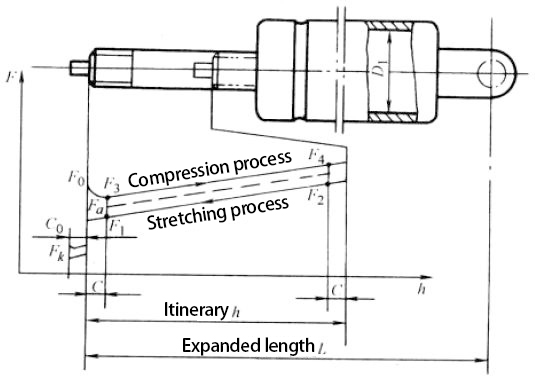Gas spring
The working principle of the gas spring is to use the inert gas as the elastic medium, and use the oil (such as transformer oil and turbine oil each 50%) to seal the lubrication and transfer the pressure of the elastic element referred to as the gas spring. It is actually a variant of the telescopic air spring, and it is also developed to further improve the elastic characteristics of the telescopic air spring. Therefore, it also has the general characteristics of air spring structure. The gas spring is generally composed of a cylinder, a piston (rod), a seal and an external connector. High-pressure nitrogen or inert gas and oil form a self-contained loop in the cylinder. The damping on the piston makes the rod-chamber and the rod-less chamber communicate, so that the pressure of the two chambers is equal. The elastic force is generated by the difference of the force area between the two cavities and the compressibility of the gas.
The gas spring has light structure and large working stroke; The motion is smooth and can play the role of damping and buffering; It has a stable near-constant characteristic line; Easy to operate, safe and reliable. But the processing cost is high.
According to the principle of sleeve air spring, it can be known that the force of the gas spring at any stroke s is:
F=pVA/v-As
P- Initial pressure in the cylinder;
V- Initial volume in the cylinder;
A- Cross-sectional area of piston rod,
Gas springs have different structures and types for different purposes. At present, we produce two types of gas springs: non-locking gas springs and locking gas springs.




